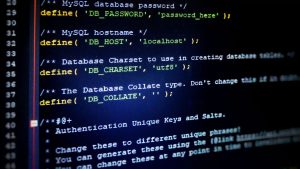Why BSD System Logs Matter for Daily Operations
Every operating system leaves a trail of messages that record what it’s doing in the background. In BSD systems, these messages are known as system logs. Understanding system logs in BSD is crucial for tracking everything from user logins to network connections and software crashes. For administrators, developers, and anyone running servers or embedded BSD setups, these logs are like a window into the system’s health and behavior.
Understanding how to read and manage BSD logs helps catch small issues before they become larger ones. For example, if a service keeps restarting, the logs will usually explain why. A quick glance at /var/log/messages or /var/log/auth.log can often reveal security attempts or configuration errors that would otherwise go unnoticed.
These logs don’t just help with errors—they also help verify that things are working as expected. A system that logs regular updates, cron jobs, or successful connections gives peace of mind. Logs are always running in the background, quietly helping administrators keep the system stable.
How Logging Works on a BSD System
Understanding system logs in BSD starts with a look at how they’re handled by the system. BSD systems use a program called syslogd to manage logging. It listens for messages from programs and services, then decides where those messages should go. Some messages might be written to a text file, while others might be ignored or sent to a remote server. This setup can be controlled by editing the /etc/syslog.conf file.
Each log message is made up of two parts: the facility and the priority. The facility describes the type of service (like mail, daemon, or auth), while the priority explains how serious the message is (such as debug, info, or critical). This structure helps system administrators filter out the noise and focus on what matters most.
The actual logs are stored in plain text files. Common ones include /var/log/messages, which records general system activity, and /var/log/cron, which keeps track of scheduled tasks. These files can be read with basic tools like cat, less, or tail.
Reading Logs in Real Time with Tail
Understanding system logs in BSD is essential when diagnosing problems as they occur, and sometimes issues happen quickly, leaving no time to search through old logs. This is where the tail -f command becomes useful. It lets users view new log entries as they happen. This is especially handy during software testing or while restarting a buggy service.
Watching logs in real time can show exactly when an event takes place. For example, restarting a web server might trigger log entries in /var/log/httpd-access.log. These messages might include useful information about failed connections or configuration errors that aren’t obvious through the browser.
Using tail -f gives a feeling of direct control. It’s like watching the heart rate monitor of a live system. This approach is often used during maintenance windows or after a fresh software deployment to make sure everything starts up smoothly.
Managing Log Size and Rotation
System logs can grow fast, especially on busy servers. Without management, these files can use up disk space and slow things down. BSD systems solve this with a program called newsyslog. It automatically rotates log files based on size or time, and it can compress older logs to save space.
The configuration for newsyslog is stored in /etc/newsyslog.conf. Here, users can set rules that tell the system when to archive logs, how many backups to keep, and whether to compress them. This keeps the log folder tidy and avoids surprises from full disks.
Well-managed log rotation also makes it easier to find what’s needed. Instead of one giant file with weeks of data, smaller files grouped by date or size are easier to search. That kind of structure saves time when tracking down a bug that started a few days ago.
Security Logging and Audit Trails
Security-related logs are some of the most valuable on any system. BSD systems keep track of login attempts, password changes, and system access. These are stored in files like /var/log/auth.log, which records who tried to log in and whether they were successful.
Failed login attempts often signal someone probing the system. Repeated entries from unknown IP addresses can suggest a brute-force attack. By reading the logs, system administrators can take steps such as blocking certain IPs or adjusting firewall rules to protect the system.
Audit logs, if enabled, can also track what commands users have run or which files were accessed. This level of detail is useful in environments where every action needs to be accountable. It’s not just about spotting intrusions—logs also help with internal audits and compliance tracking.
Debugging Services with Log Files
Logs aren’t just for security—they’re also one of the best tools for debugging. If a service refuses to start or keeps crashing, the logs are usually the first place to look. Applications often write errors to the general system logs or their own log files in /var/log.
For example, a database might log a failed connection because of missing permissions or a bad configuration file. These clues are often buried in a few lines of text, but they point directly to the issue. Searching those logs with tools like grep makes the job even faster.
Getting familiar with each application’s log behavior takes time. Some use standard system logging, while others keep their own detailed logs. Either way, knowing where those files are and how to read them can save hours of frustration during troubleshooting.
Customizing Log Behavior for Clarity
Every BSD system is different, and logs can be customized to reflect that. By editing /etc/syslog.conf, users can decide what messages get recorded and where they go. For example, it’s possible to route all security-related messages to one file while sending less important notices elsewhere.
Some systems also use syslog-ng or rsyslog, which provide even more advanced options like filtering by content, tagging entries, or forwarding logs to remote servers. This level of control can be used to keep logs clean, well-organized, and easier to scan.
This setup matters most in shared or high-traffic environments. Too many messages can hide the real problems. A customized logging layout keeps each type of information in its place. That way, when something goes wrong, the right log file already has the answer waiting.
Centralizing Logs Across Multiple Machines
Managing logs from a single BSD system is one thing, but in larger setups, there might be dozens or hundreds of machines. Collecting logs from all of them in one place can make it easier to track system-wide issues or unusual behavior.
BSD supports remote logging by sending messages from syslogd to a central server. This server collects logs from multiple systems, often using a secure connection. The result is a full picture of the network, with every message stored in a single location.
Centralized logging also helps with security monitoring. A sudden spike in failed logins across multiple servers becomes easier to spot. Rather than checking each machine one by one, administrators can see patterns as they develop and act quickly.
Keeping Logs Secure and Private
System logs can contain sensitive data. IP addresses, usernames, and file paths are often included in log entries. That’s why it’s smart to restrict access to these files. BSD systems usually store logs in /var/log, which is owned by root and protected by permissions.
Only trusted users should be able to read logs. Changing file permissions or setting up access controls can help keep logs private. Logs that are archived or transferred should be encrypted, especially when sent over public networks or stored in cloud environments.
Cleaning logs is also part of good security practice. Old logs that are no longer needed should be removed or securely deleted. This helps reduce storage use and prevents private information from lingering longer than it should.
Using Logs to Improve System Health Over Time
Logs aren’t just for emergencies—they also help track trends. A system that logs frequent warnings about memory or disk use might be nearing its limits. Seeing those messages early gives time to plan upgrades or tweak configurations.
For teams managing servers or appliances, long-term logs offer valuable context. They show how often updates happen, whether backups complete successfully, or if performance issues follow a regular schedule. This kind of detail can guide decisions and improve system planning.
Understanding system logs in BSD builds familiarity and insight over time. What once looked like noise starts to make sense, and strange entries stand out more easily. This ongoing awareness helps keep systems stable and predictable.










No Responses